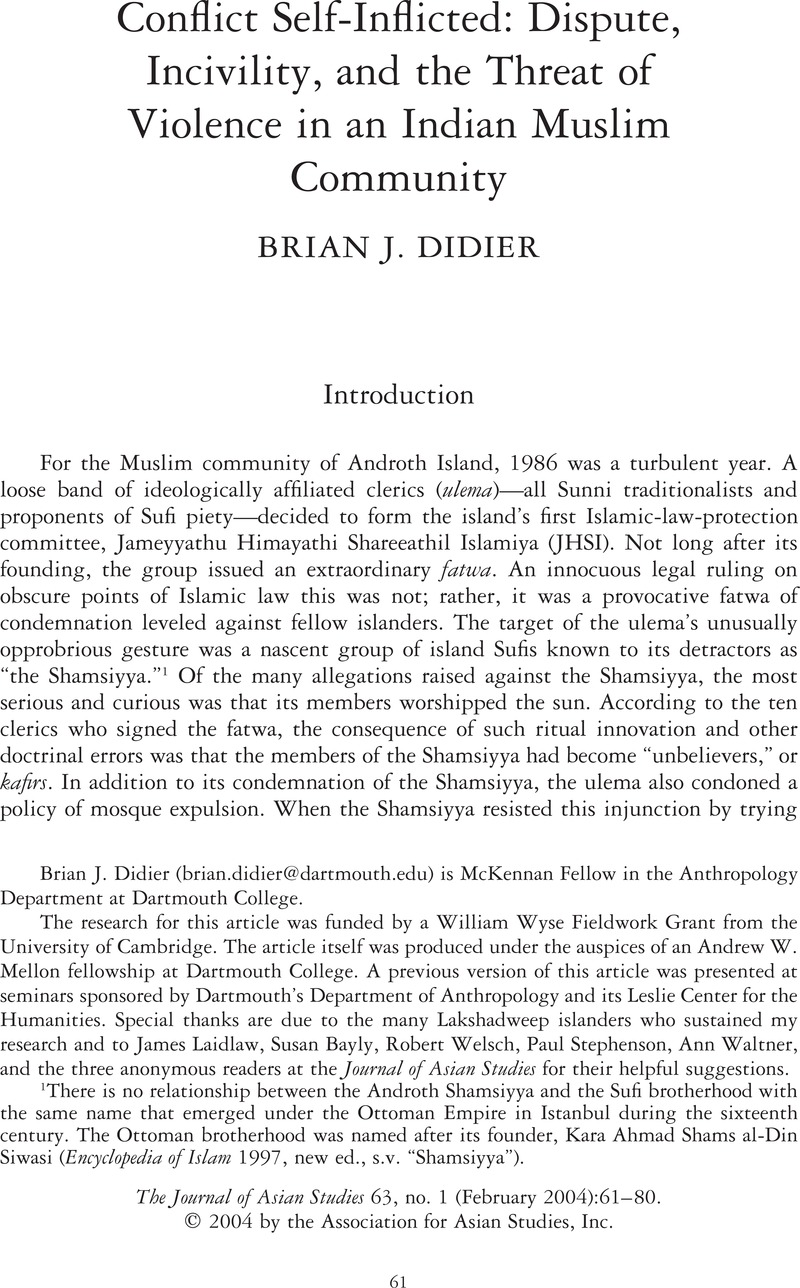Crossref Citations
This article has been cited by the following publications. This list is generated based on data provided by Crossref.
2008.
Crucible of Conflict.
p.
149.
2008.
Crucible of Conflict.
p.
167.
2008.
Crucible of Conflict.
p.
313.
2008.
Crucible of Conflict.
p.
21.
2008.
Crucible of Conflict.
p.
292.
2008.
Crucible of Conflict.
p.
3.
2008.
Crucible of Conflict.
p.
55.
2008.
Crucible of Conflict.
p.
189.
2008.
Crucible of Conflict.
p.
331.
2008.
Crucible of Conflict.
p.
266.
2008.
Crucible of Conflict.
p.
395.
2008.
Crucible of Conflict.
p.
97.
2008.
Crucible of Conflict.
p.
210.
2008.
Crucible of Conflict.
p.
369.
Williams, Philippa
2011.
A Companion to the Anthropology of India.
p.
241.
Eisenlohr, Patrick
2015.
Media, Citizenship, and Religious Mobilization: The Muharram Awareness Campaign in Mumbai.
The Journal of Asian Studies,
Vol. 74,
Issue. 3,
p.
687.
Menon, Nandagopal R.
2018.
What Do Polemics Do? Religion, Citizenship, and Secularism in South Indian Islam.
History of Religions,
Vol. 58,
Issue. 2,
p.
128.
Fewkes, Jacqueline H.
2019.
Locating Maldivian Women’s Mosques in Global Discourses.
p.
99.



